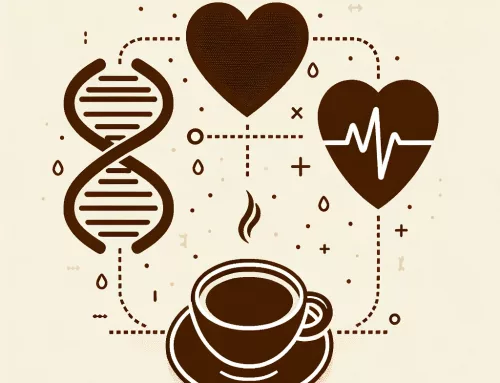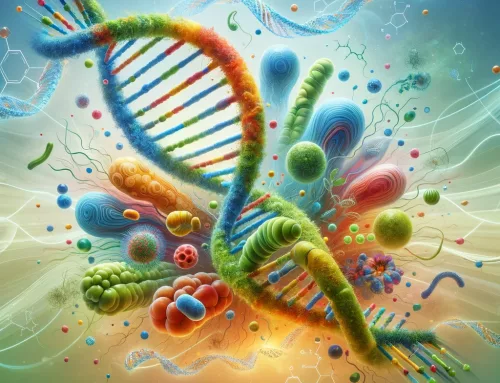Introduction
The link between salt intake and blood pressure is a critical aspect of cardiovascular health, impacting millions worldwide. More specifically, cardiovascular disease (CVD), including high blood pressure, are the leading cause of death globally.1 High dietary salt intake is the number one risk factor for high blood pressure. Despite the common advice to reduce salt consumption, the blood pressure response to salt varies significantly among individuals.2 This variance, known as salt sensitivity, has important implications for dietary recommendations and public health policies. Understanding and addressing salt sensitivity can lead to more effective strategies for managing blood pressure and reducing the risk of hypertension-related diseases.
What is salt sensitivity?
Salt sensitivity of blood pressure refers to the variability in how individuals’ blood pressure responds to sodium intake. For some, an increase in salt consumption can lead to noticeable rises in blood pressure, whereas others may not experience any significant change. We refer to people whose blood pressure reacts to salt consumption as salt-sensitive, and those who do not exhibit changes in blood pressure as salt-resistant. Although the statistics vary according to the method of diagnosing salt sensitivity, approximately 50% of people with hypertension and 30% of people with normal blood pressure are salt-sensitive.2
What are the causes of salt sensitivity
Salt sensitivity is a multifaceted condition resulting from the interplay of genetic predisposition, kidney function, hormonal balance, and other factors. It’s linked to disruptions in fluid balance regulation, notably within the renin-angiotensin aldosterone system (RAAS), contributing to its development. Additionally, compromised vascular function, diminished release of vasodilators, heightened sympathetic nervous activity, and even inflammation play important roles. The genetic predispositions are, however, the basis of salt sensitivity, with variations in genes related to the RAAS or sodium transport being significant contributors to this phenomenon.2
Importance of salt sensitivity in health and how it is measured
Salt sensitivity is a risk factor for high blood pressure, but it is also an independent CVD and mortality (death) risk factor. Research suggests that salt-sensitive individuals with normal blood pressure have similar mortality rates as individuals with hypertension.3 This highlights the importance of diagnosing salt sensitivity in younger populations to prevent CVD.
Diagnosing or measuring salt sensitivity is not straightforward. There are two most commonly used methods:
1) in patient intravenous protocol
The in-patient protocol involves a saline infusion on day 1 and an oral diuretic under conditions of restricted sodium intake on day 2. Individuals whose mean arterial pressure drops more than or equal to 10 mmHg are considered salt-sensitive, and those whose mean arterial pressure drops less than or equal to 5 mmHg are considered salt-resistant.
2) dietary method
With the dietary method, individuals are placed on a low-salt diet followed by a high-salt diet. The salt content of the diet varies according to the protocol, but it is advised that low-salt diet is no more than 3 g of salt for 7 days, after which a high-salt diet (no less than 15 g of salt) is followed for an additional 7 days. Individuals are then classified as salt sensitive or salt resistant according to changes in their BP between the low-salt and the high-salt periods.2
These methods are not feasible in routine clinical practice and therefore diagnosing salt sensitivity is not commonly done outside research setting.
At risk groups and individuals
Since it is difficult to diagnose, it is useful to know who would be at particular risk of salt sensitivity. Groups with higher chances of being salt-sensitive are older adults, postmenopausal women and individuals of African descent. While it is not entirely clear why older adults are more salt-sensitive, impairment in vasodilation (dilation of the veins) due to decrease in oestrogen, appears as the one of the key reasons for salt sensitivity in postmenopausal women. In black populations, it seems that impairment in kidney function, or insufficiently suppressed RAAS, play an important role.2
Role of salt sensitivity in personalised nutrition
As already mentioned, salt sensitivity is an independent CVD and mortality risk factor. Identifying it in younger populations would be of special interest regarding prevention of hypertension and CVD. But, it is not routinely diagnosed and populations that are known to be at risk are mostly middle aged to older adults (i.e. older adults and postmenopausal women). Research in populations of African descent is also conducted mostly in middle aged to older adults.
Since it would be difficult to identify younger individuals who are at risk of salt sensitivity, genetics may serve as an important factor. There are many genetic variations associated with salt sensitivity, but the ones most researched and used in nutrigenetic tests are variations in ACE and AGT gene (part of the RAAS system) and SLC4A5, coding for sodium transport protein in kidneys. For example, individuals with the A allele of the rs4343 variation in the ACE gene may be more salt-sensitive and should be advised to particularly pay attention to their salt intake.4,5
By genotyping, we can identify people that may be at risk of salt sensitivity and provide personalised dietary recommendations to prevent or treat high blood pressure.
Implications for dietary advice and current approaches
While current dietary guidelines suggest no more than 5 or 6 grams of salt per day, this may be too high for people that are salt-sensitive. Also, current intakes of salt are double (or more) than the recommended intakes in many countries, including the UK, parts of Europe, US, Africa and Asia.6,7 Efforts to reduce salt intake on a population level seem to have had some success but there is still space for improvement. For example, in the UK, salt intake has remained at approximately 8 grams per days for the past 10 years. Using a more personalised approach and focusing on salt-sensitive individuals may be a more cost-effective strategy in preventing hypertension.
Also, current dietary advice in treatment of hypertension, suggests reducing salt intake. If approximately 50% of people with hypertension are not sensitive to salt, then this may not be as effective for them, highlighting the potential of a more personalised approach.
Salt taste perception
A very important factor to consider when discussing salt intake is salt taste perception. Taste is one of the key drivers of food intake and is determined by our genes. Our salt taste perception is partly determined by genetic variations in salt taste receptor genes (SCNN1B and TRPV1).8 People with certain genetic variations in these receptors may not be able to perceive the taste of salt as intense and may eat more of it to achieve sensory satisfaction.
Although perception of salt is genetically driven, it can also be changed based on our current intake. Some research shows that taste buds can adapt to a low salt diet.9 Therefore, it is not surprising that most of us do not notice as food products are being reformulated gradually. For example, in the UK the salt content of pre-packed sliced bread has reduced by approximately 30% between 1980 and 2008, with consumers adjusting to these changes.
Whilst most of the population would benefit from reducing their salt intake, specific groups of people may need more salt and may experience salt cravings. These are athletes exercising for prolonged periods of time and in hot conditions, people suffering from cystic fibrosis or those who had colectomies.
Implications for food production
Besides potential in personalising dietary recommendations, both salt sensitivity of blood pressure and salt taste perception may be used in food production. Personalised food products may be developed for salt-sensitive individuals using salt substitutes or flavour enhancers such as monosodium glutamate (MSG). This may help with shifting attitudes and perspectives around MSG which has faced considerable stigma in the past. MSG can be used in lower sodium preparations to enhance flavours and have them perceived as salty with only a third of sodium content of table salt.10
Innovations in salt sensitivity
A significant issue is salt sensitivity diagnosis and there are efforts to develop a rapid method to identify salt-sensitive individuals. US and African researchers are exploring new ways to detect salt sensitivity by identifying specific proteins in urine and measuring blood pressure response to salt intake,11 aiming for simpler and more
Other innovations not directly linked to sensitivity of blood pressure to salt but individual needs for salt are products such as sweat patches. These at-home devices are used mostly by athletes and allow users to test their fluid loss, sweat rate (the amount you sweat over the course of one hour), and sodium loss (the amount of sodium you lose through your sweat) in real-time. This can then help with personalising fluid and food intake to optimise performance.12
Finally, salt intake is difficult to measure accurately with the gold-standard method being 24-hour urine collection. This is not always feasible or user-friendly, so researchers are developing new methods. One such innovation is a tooth-sensor (2 millimetres on a side, attached to the tooth) that can measure salt intake without relying on people self-reporting what they have eaten.13 Potentially, in the future, this can be used to provide users with real-time data on their intake and personalised recommendations based on this information.
Conclusions
Salt sensitivity, salt-induced increase in blood pressure, exists in both hypertensive and people with normal blood pressure. It is an independent CVD risk factor not routinely diagnosed in a clinical setting. To date, groups at particular risk have been identified as older adults, people of African descent and postmenopausal women. Considering issues in diagnosing salt sensitivity using cumbersome and expensive in-patient protocols or dietary methods, genetics are useful in identifying salt-sensitive individuals. Personalising dietary advice for salt intake may help with prevention and treatment of high blood pressure with potential of developing more personalised food products with reduced salt content. Innovations in diagnosis of salt sensitivity and measurement of salt intake may enable users to have accurate data on their salt-sensitivity status and intake which may aid in consuming more adequate amounts of salt.
References:
- WHO (2023) https://www.who.int/health-topics/cardiovascular-diseases#tab=tab_1
- Pilic et al. (2016) https://academic.oup.com/nutritionreviews/article/74/10/645/2749228?login=false
- Weinberger et al. (2021)https://pubmed.ncbi.nlm.nih.gov/11230313/
- Poch et al (2001)https://pubmed.ncbi.nlm.nih.gov/11711524/
- Parksook et al. (2022) https://pubmed.ncbi.nlm.nih.gov/36630945/
- SACN (2003). https://www.gov.uk/government/publications/sacn-salt-and-health-report
- World population review https://worldpopulationreview.com/country-rankings/salt-consumption-by-country
- Dias et al. (2013) https://pubmed.ncbi.nlm.nih.gov/23118204/
- Chung et al. (2022) https://academic.oup.com/eurjcn/article/21/Supplement_1/zvac060.077/6627347
- Maluly et al. (2017) https://www.ncbi.nlm.nih.gov/pmc/articles/PMC5694874/
- Masenga et al. (2022) https://www.ncbi.nlm.nih.gov/pmc/articles/PMC9476589/
- Baker et al. (2020)https://www.science.org/doi/full/10.1126/sciadv.abe3929
- https://www.medgadget.com/2018/03/tooth-sensor-measures-intake-of-sugar-salt-alcohol.html









Leave A Comment